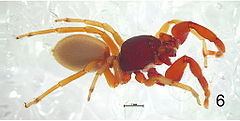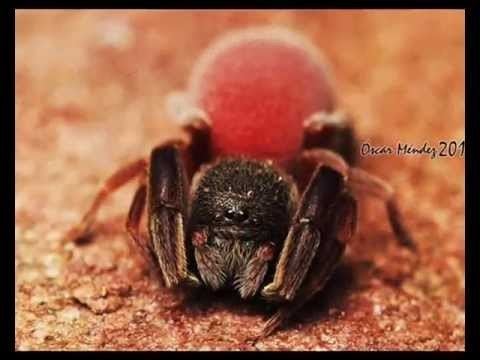Kingdom Animalia Class Arachnida Phylum Arthropoda Order Spider | Subphylum Chelicerata Infraorder Araneomorphae Rank Family | |
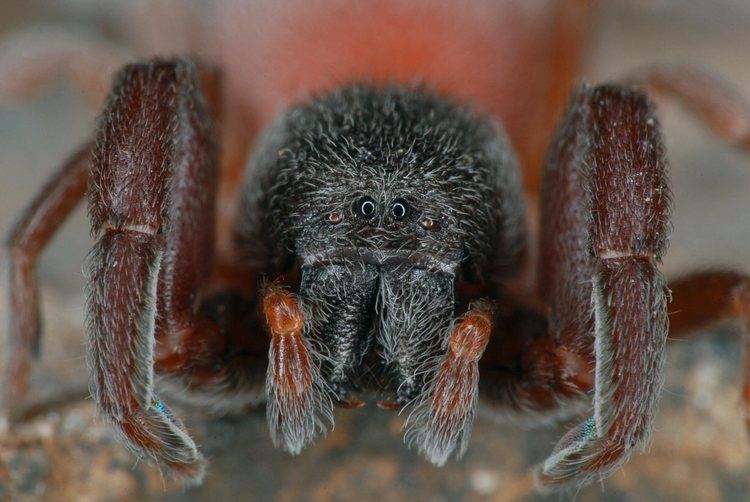 | ||
Similar Stenochilidae, Cithaeronidae, Senoculidae, Mecysmaucheniidae, Austrochilidae | ||
Palpimanus gibbulus palpimanidae
Palpimanidae is a family of spiders, known as palp-footed spiders. The family is fairly small; it includes about 130 described species of ground-dwelling spider in 15 genera.
Contents
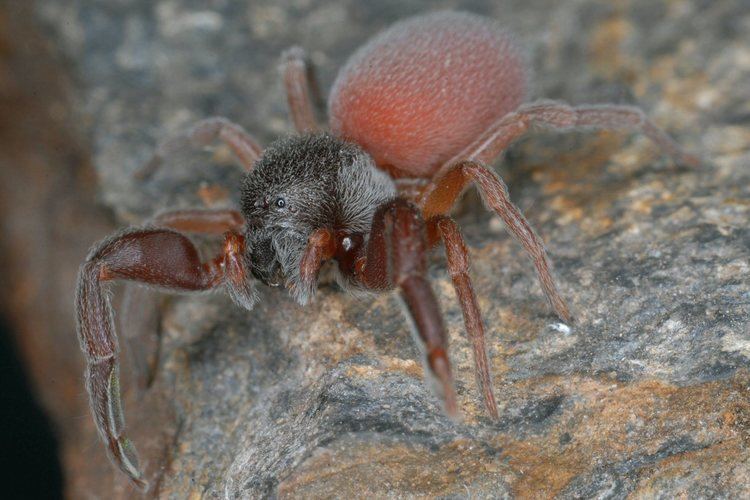
Description
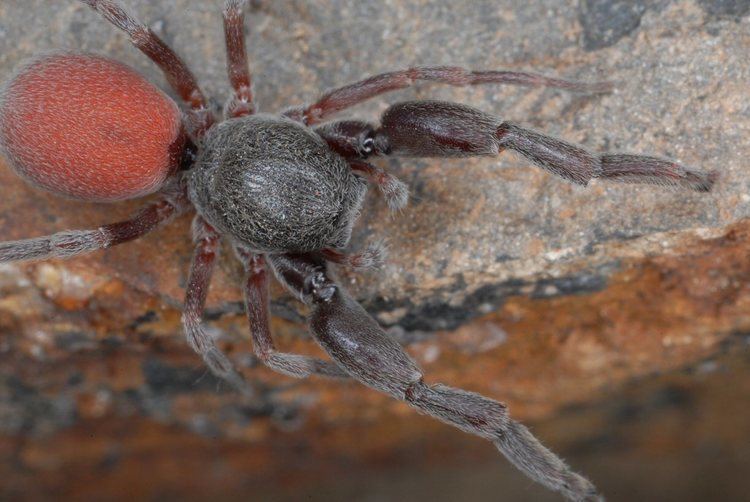
The most obvious features of the Palpimanidae are the front legs, which are disproportionately powerful and heavily sclerotised. The abdomen is round to oval, evenly sprinkled with short straight hairs that in some species are sufficiently dense to form a close-fitting coat, though most species look nearly smooth. Usually the cephalothorax is somewhat less obviously hairy. The abdomen is evenly rounded without conspicuous sculpting, and in many species is elongated into an olive shape twice as long as the cephalothorax, giving the spider a vaguely torpedo-shaped appearance. Instead of having six spinnerets like most spiders, the Palpimanidae have only two. Colour patterns generally are subdued and simple. A few genera, such as Diaphorocellus have light patches on a dark abdomen. Most others are brownish or reddish to dark in general colour, but as a rule the cephalothorax is more heavily sclerotised and darker than the abdomen, as well as glossier. There are eight eyes in two rows of four, but in some species the outer anterior and posterior eyes are close together, which has caused some people to think there are just six eyes. In some species the chelicerae have stimulatory organs, microscopic ridges, with pegs that scrape over them when they rub the chelicerae together. The probable function is to signal to each other in mating, though it might have some defensive role as well.
Biology
The behaviour of the Palpimanidae is in general poorly investigated. All species produce ecribellate silk. They certainly are ground dwellers and do not spin webs, though they many do spin shelters for themselves in holes or under rocks. Palpimanus gibbulus at least, lives in leaf litter or under stones in dry soils. Many or most species go wandering at night, either hunting or seeking mates. They generally keep their very strong first legs held up in front of themselves while walking slowly at night, and on encountering possible prey they may feel it gently before grabbing it very rapidly and powerfully, as shown in some on-line video material.
Distribution
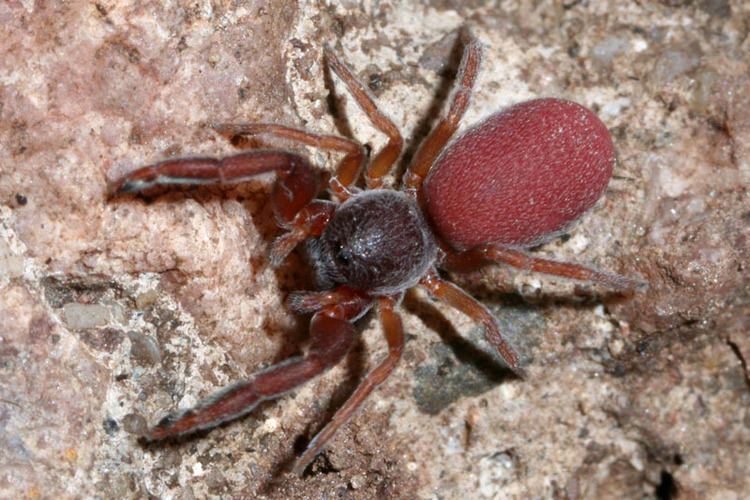
In general species in this family are widely distributed throughout the tropical and subtropical regions of the world, but are absent from Australia. Generally they are not common and there is a high degree of endemism. A few species also occur in the Mediterranean and one in Uzbekistan.
Taxonomy
The genera have been distributed as follows into three subfamilies.
